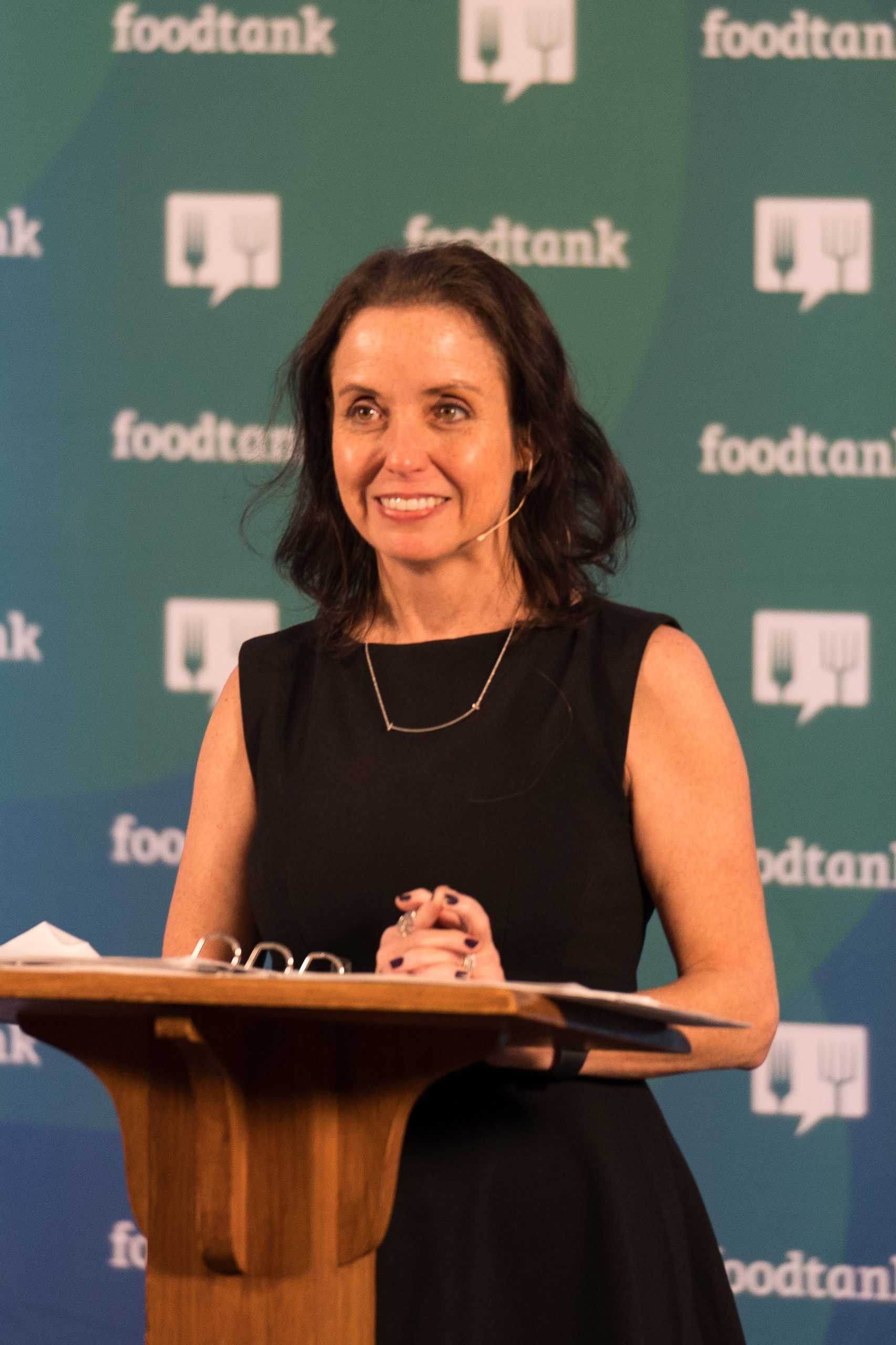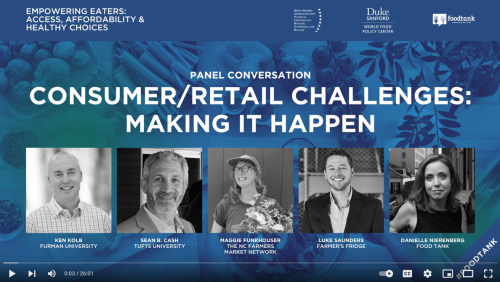Stakeholders from across North Carolina came together at Duke University on March 3, 2024 to spark dialogue and identify pathways to address a variety of challenges within the food system and a National Strategy on Hunger, Nutrition, and Health.
More than 200 in-person attendees and thousands online participated in the “Empowering Eaters: Access, Affordability, Healthy Choices” event. Farmers, faculty, students, community organizers, policymakers, and officials from non-profit organizations both sounded the alarm and exchanged ideas about how to move toward a future with better food security, health, nutrition and environmental outcomes.
The convening was organized by Duke’s World Food Policy Center, the White House, and FoodTank, a food think tank and non-profit organization based in Washington, DC.
Danielle Nierenberg of FoodTank, framed the urgency of the discussion: “Farmers are on the front line of the climate crisis.” She led and moderated 10 panels, along with Norbert Wilson, director of the World Food Policy Center, to advance National Strategy on Hunger, Nutrition and Health.
“Climate and food are interconnected,” Wilson said in the panel on food security and environmental sustainability. His research from both the Divinity School and Sanford School focuses on a comprehensive approach that emphasizes interdisciplinarity. “Food is medicine, connection and culture.
“It’s the easy way to come down to single metric, but we recognize with food security it’s a complex system that people are part of—it’s not one metric. It will take community groups, academia, policymakers and all of us coming together for better systems.”
Several themes emerged throughout the day-long event. These included the following:
- The importance of integrating life experience into food approaches, from the farm to the consumer experience.
- The necessity of rethinking food systems and the connection between culture, food, health and community.
- The contours of how to structure supply chain approaches for healthier food, such as cold-chain infrastructure for frozen food.
- The connections between faith and food, with faith-based communities help with land and farmer support processes.
- The considerations associated with rooting work in the community and engaging local stakeholders early and often.
- The need to advance national commitments to end hunger and reduce diet related disease by 2030.
Interdisciplinary perspectives from the Sanford School of Public Policy, the Divinity School, Fuqua School of Business, Duke Health and Nicholas School of the Environment added valuable dimensions to the conversations.
In opening remarks, Craig Albanese, CEO of Duke University Health Systems, said: “Food as medicine is a scientifically proven remedy, and yet many do not have access to healthy, affordable food. It’s heartbreaking to me that there are adults and children that go to bed hungry at night. Partnerships and summits hold immense power. We need each other to overcome and address food issues.” He and others from Duke Health emphasized the value of community-engaged health, including programs like Root Causes, co-founded by former Duke students.
Durham Mayor Leonardo Williams talked about the importance of the convening as a resident of the city and county from the perspective of his own life experience as a restauranteur. “I grew up in eastern NC. In church. Folks had the attitude of ‘I just want to thank the Lord for seeing another day.’ They would avoid going to the doctor. I have been to more funerals than family reunions. And it is always because of same thing: we are what we eat.” He and his wife opened Zweli’s restaurant in 2018, and he prioritizes sourcing food locally.
More than half a dozen members of Congress also provided video comments for the event, the importance of which is underscored by distressing national metrics surrounding food security and nutrition.
“National statistics indicate that some households are more likely to be food insecure. This is a large problem in our society. Programs like SNAP reduce food insecurity, but we know that inequality still persists. What are larger policies we can implement? What are the economic opportunities for families experiencing food insecurity? It’s messy and complicated. Research can offer thoughtful scientific work that we need for change. And students, many here today, are recognizing this is valuable work that is part of the larger issue of climate,” Wilson said.
Watch Summit Sessions & Read Discussion Transcripts
Event Highlights
Guest Speakers

Baldemar Velasquez, president of Farm Labor Organizing Committee (FLOC), talked about what ‘success’ means when working with farm workers, farmers and food companies. "One of my favorite things about today is getting people to think outside of their siloes. If we don’t think about our place in global food production, we’re not going to make it."
He emphasized the skill and knowledge that is required of farmworkers and the false division that exists between farmers and farmworkers. He talked about the challenges small and medium sized farms have with respect to commodity crop prices. There’s nothing they can do to change the price they will receive – but that doesn’t take into account what it actually costs for them to grow and harvest their crops. "When we’re voiceless, we’re at the mercy of those who want to give us charity." FLOC is one of the oldest organizations advocating for farm workers in the United States.
"For children who are developing, not having access to nutrition makes no sense. Healthy starts for Moms are and children is critical,” said Congresswoman Valerie Foushee, who co-sponsored a bill to expand the Special Supplemental Nutrition Program for Women, Infants and Children known as WIC. “I do believe that there is a sense in Congress where we’re at a critical point. Where it’s our responsibility to provide and address these issues front and center,” she said. “There is a bipartisan caucus with both sides of politics coming together because hungry people come from all sides of the political spectrum.”
Foushee finds hope in the newly approved summer EBT program to provide meals through school systems throughout the summer. “There was a coming together in a bipartisan way to provide opportunities during the pandemic, and we need this to continue,” she said. “Just because the pandemic is over does not mean people suddenly know how access to food—these programs are still needed.”
Foushee said farmers are on the front lines of the climate crisis. “We need to help farmers in North Carolina address climate change, help them adjust to the impacts on their crops.” She talked about the need to continue supporting land grant universities as vital assistance for farmers, as a place where farmers can go for help and advice.
She also emphasized the role of citizen eaters who need to vote with these issues in mind. “What we have to do is pay attention to who is representing us—to what they will do for us. Those in public life want to help.”


“We start with the belief that everybody in this country should have the resources to live to their highest potential and this starts with food. Food is a basic human right. Without access to food, we cannot live to our highest potential,” said Luis Guardia, President of Food Research & Action Center (FRAC). FRAC is a nonprofit advocacy and policy organization working to improve the nutrition, health, and well-being of people struggling with poverty-related hunger in the US.
Hunger should be a bipartisan issue, Guardia said. “It requires an entire community to support a better food system, from across disciplines, across political lines, and across communities. We need to look at the moment we are currently in, politically, and socially, coming out of a pandemic. Food wise, we are seeing hunger rates increase currently. We have some solutions in place, and policies making their way through congress that we need to make sure people know we are supporting, that are vital to addressing hunger in this country.”
One of FRAC’s key priorities is universal school meals. “FRAC is proud to be working on the national coalition to make healthy school meals available to every school child in this country,” said Guardia. “We saw the benefit during the pandemic, but recently we this benefit has been lost and children are being denied food in the cafeteria and experiencing stigmatization, which is unacceptable.”
Money is at the center of solutions and attacks on food security efforts, he said. “How do we get past arguments about school lunch debt and SNAP? SNAP is important individually, but it’s also important economically in the national economy, for every $1 spent from SNAP, locally economies grow by $1.50. SNAP puts food on the table, grows local economies, and it produces jobs.”
Sioux Chef Sean Sherman, the executive director of North American Traditional Indigenous Food Systems, is an award-winning chef, educator, author, and activist. His work at NATIFs draws attention to indigenous food systems and the damage that colonialism has wrought on social, environmental and economic systems.
Every aspect of the non-profit organization focuses on focuses on undoing the historical injustices of colonialism. “Our restaurant, Owamni, is owned by our non-profit. We employ 150 people even during the winter and were doing around $5.5 million in business putting dollars directly into the hands of indigenous food producers,” he said. “Just as important, the restaurant creates a voice for us. Native foodways have been invisible for so long. And so popularizing native foods is part of decolonizing our food systems and just being visible means a great deal. We’re also working to create a hub and spoke model and work with all native populations across the country.”
“The Indigenous Food Lab Market features 50 different producers of indigenous foods, and a classroom focusing on indigenous languages and seed saving and cooking,” said Sherman “Through the kitchen, we do value add work with indigenous food stuffs and supports cottage industries in native foods. Our goal is to create the education infrastructure so that people can learn how to cook native ingredients.”

Panel: Food Justice is Access and Affordability

Norbert Wilson, professor of public policy at Duke and director of the World Food Policy Center, “Representation is a problem in our society. SNAP is a wonderful. That really does help. However, the inequalities persist. At the root of food insecurity is economic inequality. We have to look at the economic policies and support people economically. We have to consider housing, and employment opportunities – it’s all related to the ability to afford healthy food,” he said.
"And it’s not about just getting folks access to food, which is important. I would never want to suggest that isn’t important, but it’s also recognizing that people live in communities and their family situations and there are just challenges with the larger society that we need to address. So it does take that whole of society approach to address this complex issue," he said.
Eric Wiebe, a member of the leadership committee at Emanuel Food Pantry, knows firsthand how challenging food access issues can be. Emanuel Food Pantry is the largest food pantry in Durham, NC. “Through our work, we provide high quality, nutritious food to our neighbors every week. And we have to pursue multiple avenues and work with local wholesalers and grocery stores. “We partner with Happy Dirt using a grant to get food from them, as well as local farmers and small gardens that bring produce to the pantry.”
Wiebe called for more grant funding, infrastructure, and produce. But even if those issues were solved, barriers remain. “For me, one of biggest challenges is general education around healthy foods instead of processed foods,” he said. “How do we introduce them to collards that maybe their grandmothers cooked but they’ve never seen?”


Former Durham County Food Security Coordinator Mary Oxendine, now at Potlikker Capital, got a round of applause when she called on the federal government to change agricultural subsidies. Rather than subsidizing corn and wheat and then also trying to fund health programs outside of this, it would be better to make the healthy choice the easy choice. Subsidies influence diets and nutrition, she explained. “The federal government needs to subsidize fruits and vegetables and less corn and wheat crops that go towards processed foods and ethanol,” she said.
Oxendine also spoke about how difficult it is to solve food insecurity. “People think food security is simple, but it’s not. Solutions need to consider a wide range of factors, including allergies, what is culturally relevant, whether folks are unhoused or carceral impacted, general infrastructure, and other health factors.”
Justine Post, program director for the Rural Advancement Foundation International USA (RAFI) talked about how critical relationships are to solve food access problems. “The resources in North Carolina are huge. It’s a great place to farm. We really think that churches and faith communities are in a great place to be in relationship with farmers. Faith communities can participate in protecting land and sharing future farming generations.”
Building community around food solutions is key to strengthening local food and agriculture systems, she said. RAFI works at the connecting piece between faith communities and farmers. “Churches are doing a ‘Yes, And.’ Yes they are addressing food insecurity by simply feeding people. AND they are working beyond the charitable food security, stepping into advocacy work and building relations outside of the churches.” RAFI tries to provide a hub for churches to do this work and also provide necessary resources. RAFI’s Come to the Table program started as a Community Supported Agriculture (CSA) effort. “We asked churches to step into the vulnerability with farmers by participating in CSAs. Beyond transactional, they want to be together and share meals together.”
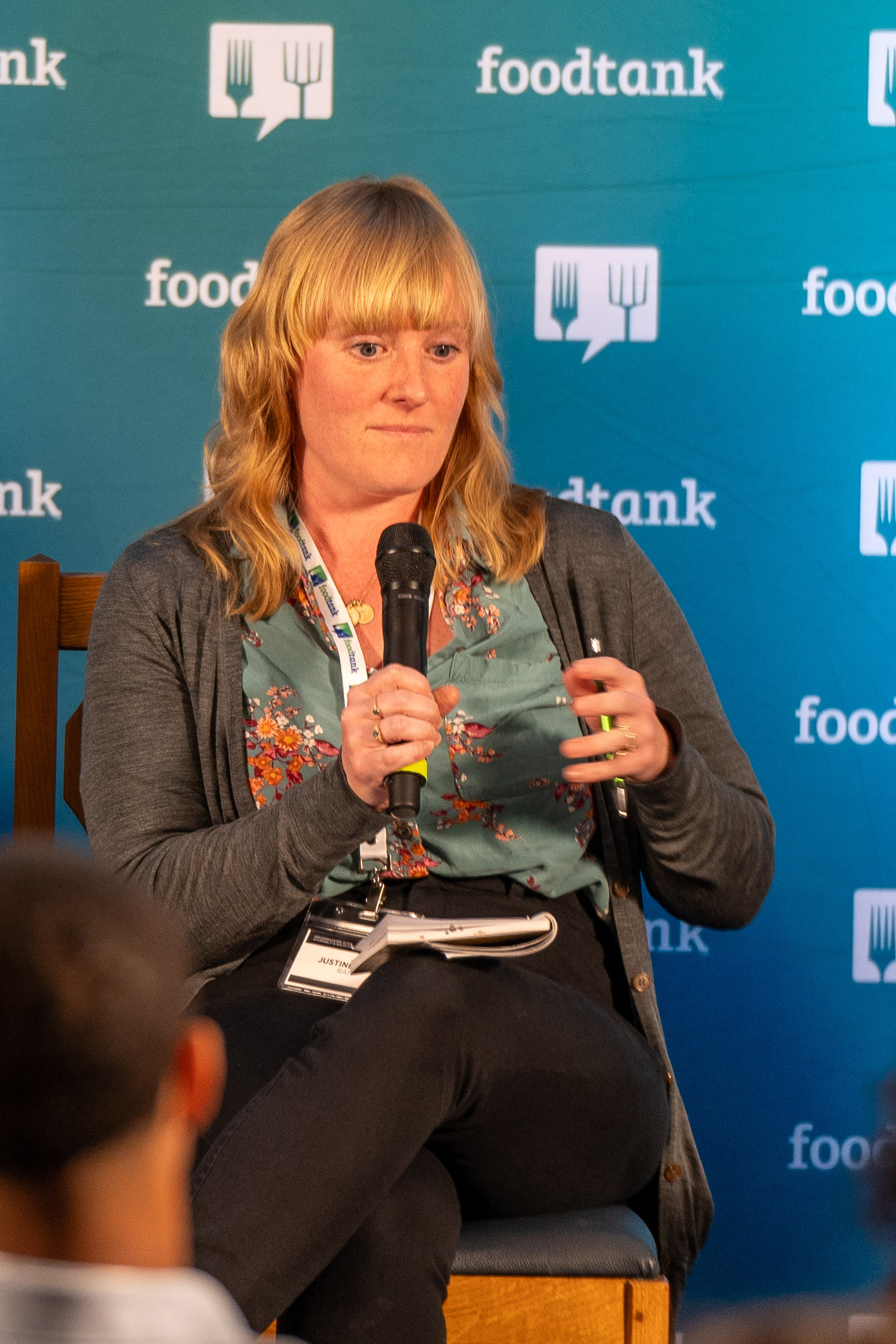
Healthier Food Environments

University of North Carolina-Chapel Hill Professor and Director of the Center for Health Promotion and Disease Prevention Alice Ammerman highlighted the importance of taste and cultural relevance as we develop solutions. “Food needs to taste good,” she said. “Medically tailored meals are away to reach people that may not have access to the right nutrition. Using Medicaid dollars to fund medically tailored groceries and meals makes sense.”
It's also important to educate people on how to use local foods. The Mediterranean Diet is often recommended to people, for example. “The Mediterranean Diet can be adapted to local culturally relevant foods. In North Carolina, for example, this diet can incorporate meals built around sweet potatoes.”
Duke Fuqua School of Business Professor Gavan Fitzsimons works directly with big business and this experience helped him bring unique perspectives to the conversation. “We are underutilizing the private sector. We should not shy away from profit incentives. Big business is interested in getting healthier options in front of people. And, highlighting local [in marketing] is a boon for businesses’ bottom lines,” he said.
Fitzsimons described one company now spending $8M annually, with 45 chefs and researchers on staff developing healthier foods for kids. “In my mind, this is a good thing. The industry goalpost for ‘healthy’ keep changing and it takes time to develop foods. In recent years, cutting fat has been a priority. Then salt. Now sugar. What’s next?” What would be helpful is for communities to communicate what they need and want, he said. And it’s helpful to reward kids for trying new foods and getting parents involved.


Chef Rob Kinneen talked about NATIFS (North American Traditional Indigenous Food Systems), an organization dedicated to addressing the economic and health crises affective Native communities by reestablishing Native foodways. NATIFS is working with the federal government and Tribal colleges to improve regional food systems, reintroduce traditional ingredients, and promote the importance of cultural relevance when developing healthy meals. “What I love so much about working with NATIFS and working with NATIFS founder, Sioux Chef Sean Sherman, is how they are tackling these issues at multiple levels. They are working with producers and other businesses to get healthy Native ingredients and food products in front of people.”
“We’re taking indigenous food philosophies and integrating them into the food programs at schools, including tribal schools. We’re opening dialog with indigenous farmers and making connections,” said Kineen. “Unless the products exist in the marketplace, we can’t implement the policies we want in the public places such as schools.”
“What I love about coming to Food Tank events is the difference in folks’ relationships with food. We hear different perspectives and recognize the benefits of getting people out of their siloes,” said White House representative Kelliann Blazek, a special assistant to the President on agriculture and rural policy. She spoke about several White House priorities, including tribal sovereignty and indigenous food pathways, and reducing consumption of added sugar across all populations. “We need to make sure the healthy option is also the easier option,” she said. “This starts in the school system, making sure there are healthier food options in schools.”
The USDA is trying to connect the dots between local farmers and schools and has invested 200 million to help schools purchase from local producers. “This is a win for producers that need markets, win for providing culturally appropriate foods, and win for schools to get healthy produce,” she said. “We are now working on a proposed rule to phase out an added-sugar foods, and provide time for producers to and children to adjust.”

Food is Medicine
“We have to engage people with the lived experience of food and nutrition insecurity,” said Chris Collins, Associate Director of Health Care at The Duke Endowment, highlighting the importance of relationships and centering communities' needs when developing solutions. “Health care systems can gather information from patients to get a grasp on their food access situation. We need leaders from their communities who can work alongside health care teams and help patients navigate the food system and get the help they need for their particular situation.”
"That community health worker, when they’re picked correctly, is really a leader from the community," said Collins. "It is someone from that community who knows the barriers, whether that’s a food desert or the difficulty of filling out a SNAP benefit for someone who may be English is their second language. So they work very closely and help that individual navigate. And often these things are interconnected. So we uncover that somebody is food insecure, but if they’re also homeless, they’re not going to be able to prepare the food, they’re not going to be able to store the food. So they can address the host of a really holistic approach to health. And there is no shortage unfortunately in this country of people with lived experiences and difficult experiences, and we’re finding them to be really effective in this work."


“The wonderful thing about the community-based organizations being involved in food is medicine is that they have the relationships, they've been there, they're not popping in because this is the new hottest topic. They are there. The difficult relationship is how they can partner with healthcare in an equitable way to deliver this,” said Merry Davis, Healthy Food Director, Blue Cross and Blue Shield North Carolina Foundation.
“Community-based organizations are delivering something so much more than just food as medicine. They are addressing and supporting the community, farmers, the land, and economy.” But we need overarching policy change, she said. Grant funding can only go so far. Systemic changes to the food system are needed.
Debra Clark Jones, Associate Vice President of Community Health, Duke University, highlighted the importance of building relationships with and listening to the community as we develop food as medicine solutions. “Sometimes we fail to recognize the assets we have in the community. By engaging the larger community, we become better health providers,” she said. “We’re working with community-based organizations to co-design health interventions. Success comes from listening to diverse voices at the table.” She highlighted the work of Duke students in the local food system, including Root Causes and climate smart initiatives partnering with Duke’s dining services organization.
“It’s important to define what we mean by health equity. Everyone should have a fair and just opportunity to achieve their highest-level health,” she said. “There are many barriers to achieving this, including socio-economic status.”


Social services provided at the state level need to connect with the health care system, without allowing the health care system to take over, said Betsey Cuervo Tilson, State Health Director and Chief Medical Officer at the North Carolina Department of Health & Human Services. “We need to be maximizing enrollment in federal benefits. The Medicaid expansion connects to food, helping people put more of their money towards food and not towards medical bills. State government can help build the ecosystem and infrastructure to make sure the State has support to get the food justice work done,” she said. “And finally, States can also support and leverage their Medicaid dollars to actually go towards food and housing, making the money flexible so it can be used towards a more holistic approach to health. It's just a win-win-win when you can leverage dollars to pay for food."
Food Security Means Environmental Sustainability
"I think farmers are partners in this whole process and we need to start treating them equally like they are a partner," said Debbie Hamrick, director of Specialty Crops at the North Carolina Farm Bureau Federation. "We heard from our prior speaker on labor that we’re seeing more and more imports, American fresh fruit and vegetable producers, their market share for the US market of fresh produce is expected to decline by 2.1% every year for the next 10 years. That’s just out in the USDA report. That’s not how we need to be treating our number one partner that provides healthy, fresh fruits and vegetables. All farmers need land, they need labor and they need a rational regulatory system in order to operate that gives them the tools that they need to be able to jiggle whatever they have around them to make a profit."
"Here in North Carolina we have about 8 million acres that are in farmland. American Farmland Trust estimates that over the next few years by 2050, we’re going to lose one to 2 million acres of farmland to development. Now, I want to give you an idea of the 129 acres in Northern Durham County. That’s a great incubator farm. I’m so excited that Durham County has decided that they want to foster farmers coming in," she said. "But the state of North Carolina has lost 100,000 acres to solar panels in just the past few years. My county president in Washington County, we were on the phone on Friday and he said, “Yeah, Debbie, I’m surrounded by solar panels right now,” some of the prime farmland on the East Coast with the Castle-Hayne Aquifer underneath. We have water that California does not have to produce fruits and vegetables and we’re putting solar panels on that land. It’s an economic decision, but still as a country, we’re not valuing the farmer for the partner that the farm and the farmer really is in this whole discussion."
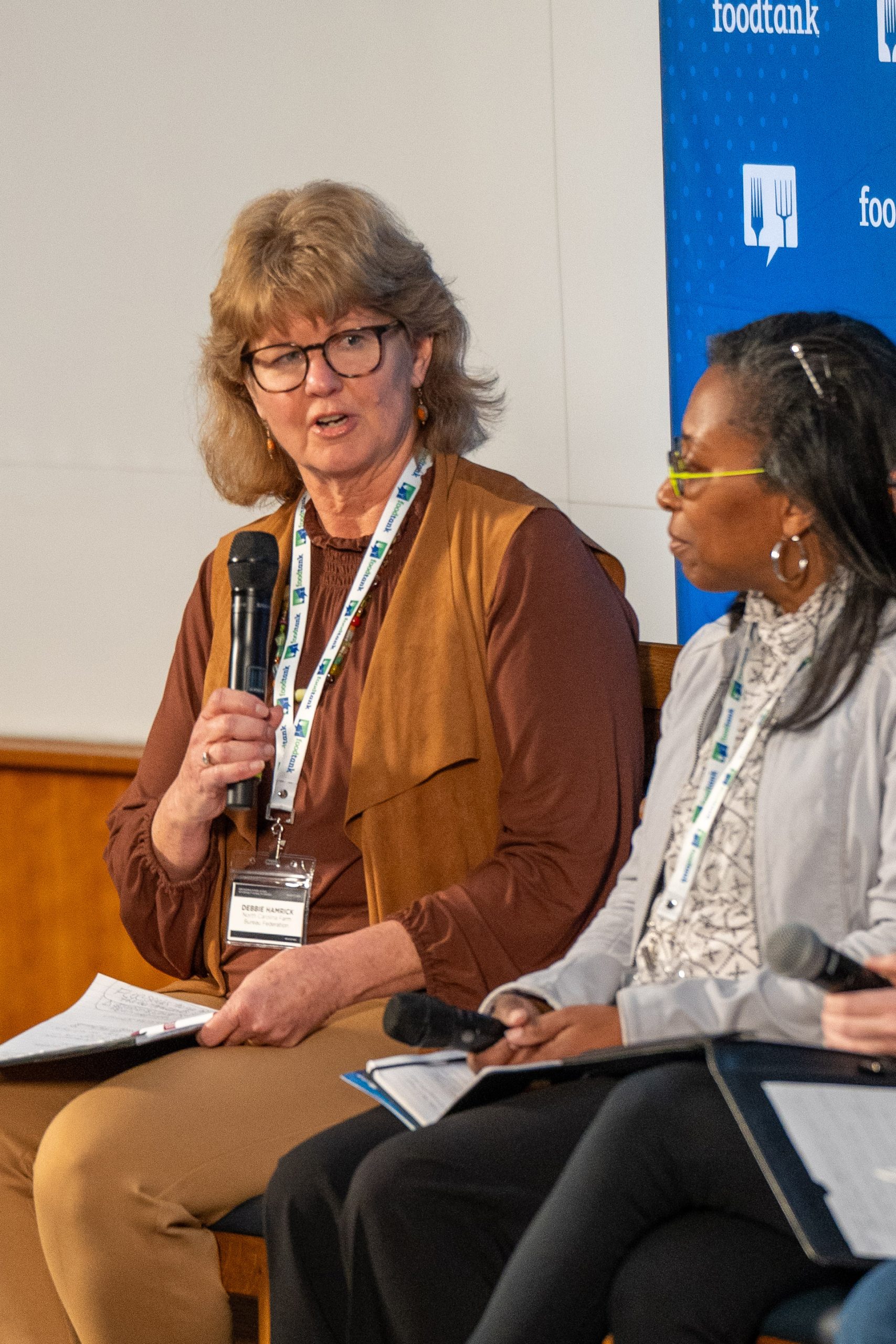

“The pandemic shifted a lot of consumer behavior, and part of our job is to bring new options to consumers,” said Steven Jennings, stakeholder relationship and brand lead for Health & Sustainability at Ahold Delhaize USA, one of the world's largest food retail groups. “We need to be a role model to nudge our customers to healthy choices while protecting the health of the planet,” said. But there are many technical challenges specific to food as medicine, for example, and helping consumers achieve healthy benefits from their purchases while also providing the best shopping experience. Jenning’s first job was at a grocery store. He recalled customers with food stamps who would line in towards tellers to say how they would pay for their groceries. Customers behind them would get impatient with the wait. “The whole checkout process felt shameful and undignified,” said Jennings. “We work a lot on the consumer experience in our stores.”
“There is a huge opportunity to work on the perception of the frozen food process and the role of frozen food in reducing food waste and increasing nutritious food access,” said Jennifer Norka, director of regulatory and scientific affairs at American Frozen Food Institute. "Frozen food starts as fresh food. Frozen is just a temperature state, and an ancient method of preserving foods.” Technology for freezing food has advanced significantly. “It’s not the unappealing and mushy frozen food of the ‘70s and ‘80s,” she said.
Norka called for investment in cold chain infrastructure – the process of transporting food that needs to remain refrigerated or frozen. "It helps with food waste and this can help at the consumer level with household food waste," she explained. "We know through national consumer surveys that messaging doesn’t necessarily identify with consumers. But when you talk about food waste as a way to limit economic waste in a time when consumers are really struggling to stretch their food dollars with inflation and all of those things happening in the world, we need to lean in on how frozen can help them limit their food waste and limit their economic waste at home through portion control and portion balance where you’re not making too much. You’re not going to throw excess away or through having that amount that you only need to add into a recipe and you can save the rest for a later period."
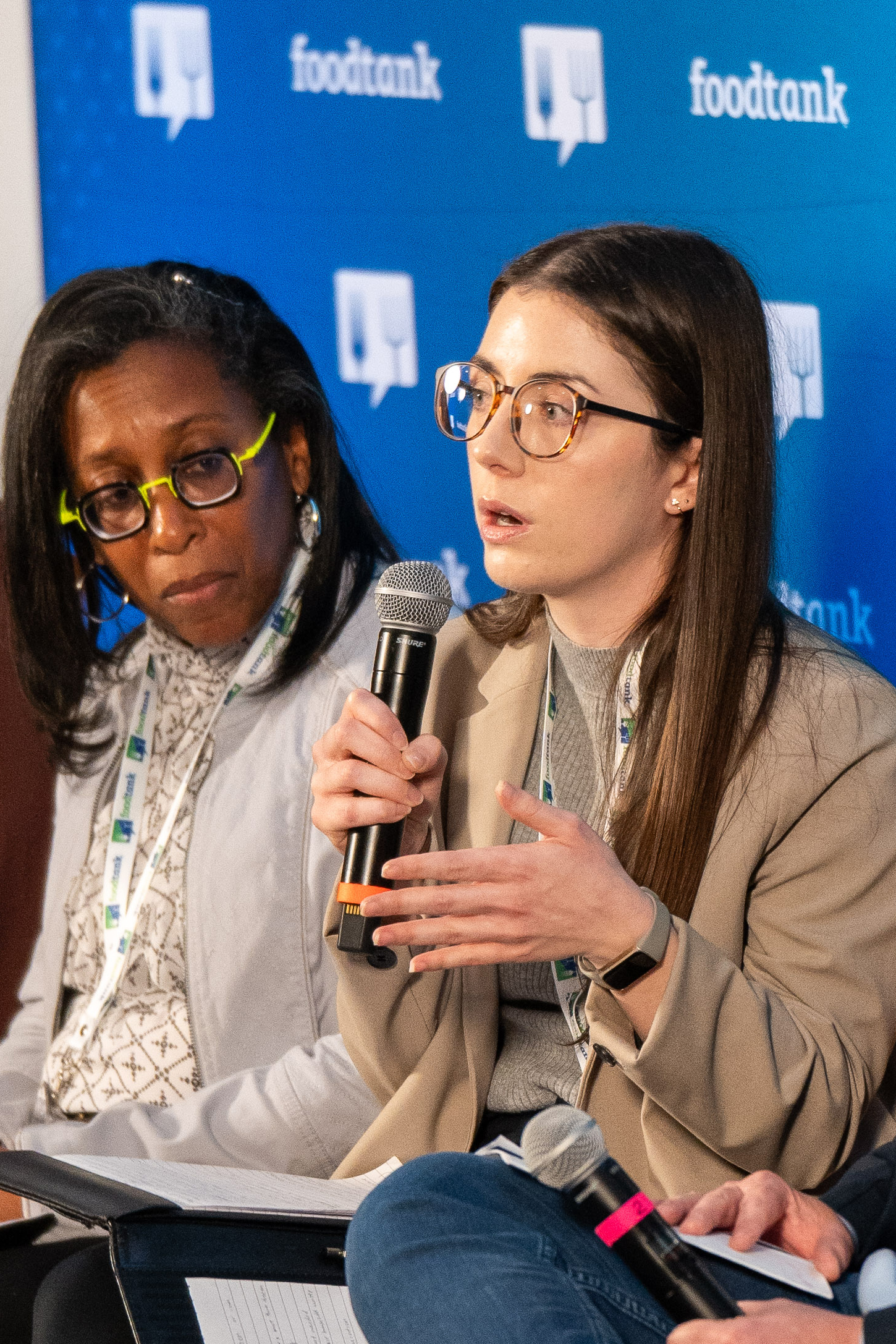

"If you think about on one side we have roughly a third of the food that’s generated is unsold and potentially part of that goes to waste, goes into the landfill. Then on the other side of that, we have roughly as of 2022, 44 million households and Americans that are food insecure. Food banks are an integral part of the supply chain that helps to connect this potential food that’s available to those who actually need it," said Lauren Davis of North Carolina A&T University. "They work very hard to cultivate these relationships, not only with big box retailers like Walmart, Sam’s Club, local growers that we’ve heard about, like Black, Indigenous, and People of Color (BIPOC) farmers as well, to actually try to make sure that this food can be rescued and distributed through their very large network that they have of food pantries, soup kitchens, what they call partner agencies that are working on the front lines to actually serve people who are food insecure."
Consumer/Retail Challenges - Making it Happen


Both Tufts University Professor Sean Cash and Furman University Professor Ken Kolb emphasized the importance of meeting customers where they are.
“In the US in the past 60 years, households have changed. Today, one in seven adults lives alone. Under those situations, getting to the store is difficult among all the tasks they need to accomplish in a day. We need to incorporate into interventions an understanding of the time constraints households are under,” said sociologist Ken Kolb. “If other agencies can help with tasks like prepping food and cut down on some of the prep time for people at home, addressing that time bind would help people prepare healthy foods in their home.” Kolb specializes in the study of retail inequality.
“A big part of the work that my colleagues and I have been doing at Tufts has been looking at some of the ways in which the environments in which we purchase food have been changing, and dollar stores are one of the most dramatic parts of that. What's more, 80% of Americans bought food online and 20% report this is part of the regular food purchasing habits,” said Sean Cash. “What we’ve seen across the online grocery purchasing platforms, what we have not seen is the sharing and provision of required information like the ingredient list, allergen disclosures, etc. We’re not seeing this consistently provided. This is important because we know it does matter. People do better in their choices when they have more information about their foods. In the absence of requiring display of nutrition facts panel or ingredient, what we see instead are ads and “push” language to get us to buy foods that might not be healthy for us.”
Luke Saunders, CEO and founder of Farmers Fridge, emphasized how the private sector can help individuals and family make eating healthy choices easy. “We recognize that time constraints are one of the biggest factors preventing people from eating healthy. So, we put food in vending machines in 22 states in the country. We make it as easy to eat healthy as it is to get a candy bar from the vending machine.”
"We actually just graduated to the level of scale where we’re skipping the Cisco and the US food step and able to get food directly in. It allows us to get higher quality ingredients, better shelf life for our customers, things like that," said Saunders. "I think just being able to aggregate that demand is a big part of how we thought about it from the beginning, which is more traditional CPG. You were hearing earlier a conversation about negotiating with farms and farmers and farm workers. That’s the aspiration that we had, is if you can be moving the market for pickles and tomatoes, but you’re doing it for salads. We carry 150 ingredients in our pantry, that’s how you really positively impact the food system and also improve human health. So it’s that virtuous cycle."


Maggie Funkhouser, manager of the North Carolina Farmers Market Network, spoke about the important role farmers markets can play in addressing food and nutrition insecurity. And she described the exciting work that is already happening in North Carolina to make farmers markets more vibrant, economically profitable for farmers, and more responsive to the communities they serve. “We find that farm businesses need to be at a certain size in order to create value added foods for sale in farmers markets,” said Funkhouser. “They then have to comply with food safety and handling regulations in order to do value added enhancements. There is a lot of infrastructure that is needed.”
Farmers markets across North Carolina are making it as easy as possible for people to leverage SNAP benefit dollars through things like Double Bucks. “We are really lucky to make this service possible for people. All of our vendors who offer SNAP eligible items accept SNAP enhancements like cash matches which are called Double Bucks in the Durham/Raleigh area of North Carolina. “Farmers Markets can have a license that is broadly shared among vendors – and that is a huge help for individual farmers who then do not have to create and pay for that infrastructure for themselves.”

